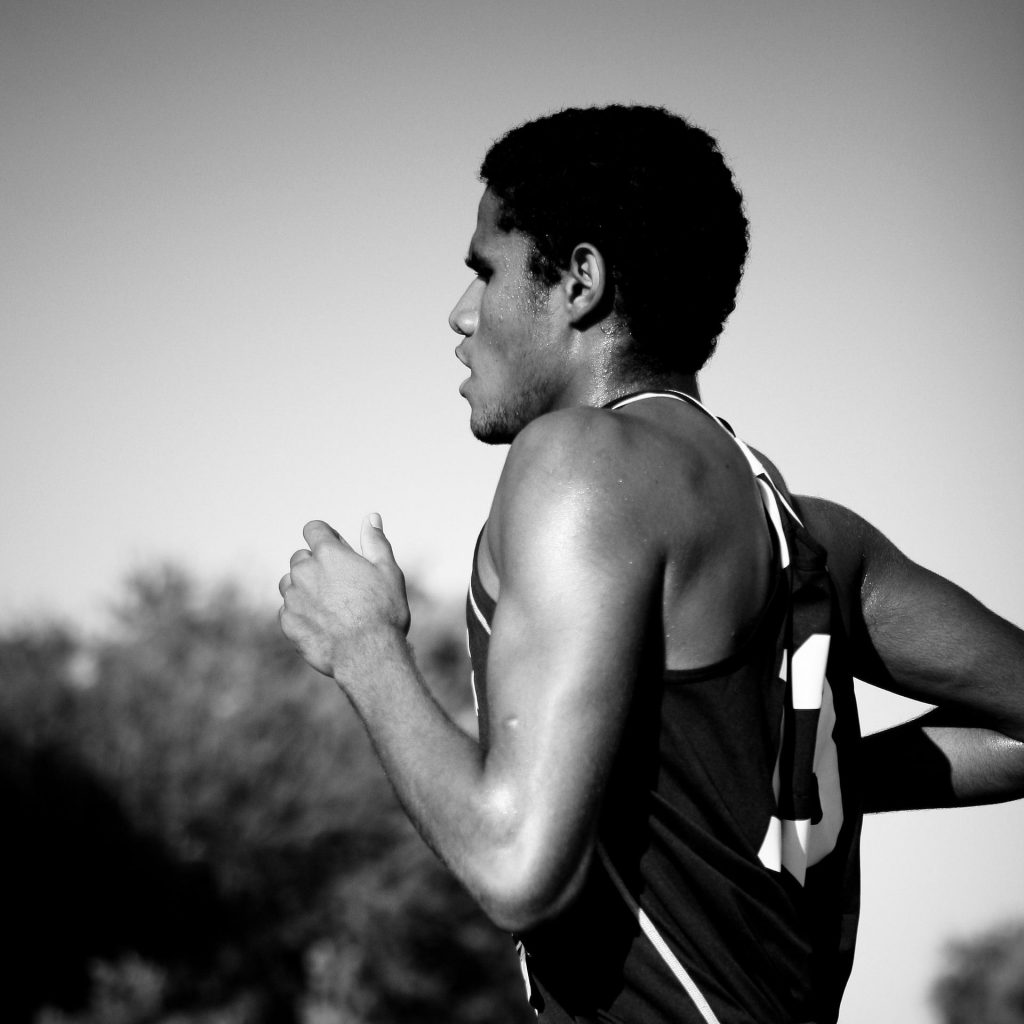These tricks and strategies for dealing with time and distance should not become too rigid, otherwise it’s a repetition of the age-old story of the revolutionary forces coming in to break up the decadent crystallised structures but then becoming just as reactionary themselves as they seek to reorganise in their new way.
Doing evening laps in the afternoon got me through one multi-day race (see here) but on the same race the following year I realised that I wasn’t doing that anymore, although I would probably have been trying out some strategy based on similar principles. In fact, on for example a two hour run, when I’ve used some little trick to get through the first hour and managed more or less to keep the second hour out of mind with the intention of repeating the trick a second time, often a variation creeps in during the second half.
There is much dividing up, replacing and re-envisaging with all of this, all of which has a kind of fractal nature that lends itself to continually being changed but remains based on the same underlying principle. It’s also about keeping a freshness and lightness to maintain a buffer against the fears, doubts, anxieties and the dull, slow, mechanistic time.
As described (see here) it’s often not just about dividing things up once or twice but rather there can be a whole array of little subterfuges going on at the same time. Elsewhere I likened it to an array of spinning tops (see here). I think prayer wheels (those ones you see in Buddhist countries around south-east Asia) is also a fitting analogy – there’s a dynamic energy to them all spinning at once and sending out their individual messages. Or perhaps Tibetan prayer flags or all the branches of a tree swaying in the breeze.

This morning I went to do another 18 miler on the treadmill1 and as I started I thought I’d really better try and put into practice all these things I’ve been suggesting. The first thing that was clear, as mentioned above, was that I wasn’t using the treadmill long run stratagy I spent ages explaining elsewhere (see here)! The first thing was just to get going as soon as possible.
Just get running and don’t spend too much time planning and getting ready. Once there are some miles under the belt you can always stop, if you need to, in order to sort something out, but you won’t have the huge mountain of 18 miles ahead of you anymore. You can also delay getting your head around it all for a bit but you really need to get that clock ticking down. It’s going to be hard enough even once you are in the thick of things but if you start getting bogged down with all sorts of mental tension before you’ve even started then you are making things very hard for yourself.
I started off at a very easy 11 minute pace as a warm up and continued that for the first three miles. At this stage the mind is not too bothered – I have no idea if I’m actually going to do the full 18 miles and no idea of what pace it’s going to be at.2 After 3 miles I stop the treadmill and go for a very quick bathroom break – so now I can start at the beginning and at least something has been done. I’m not thinking it’s 15 miles left at this stage. That’s actually a good thought but the mind is not distressed yet so I don’t need to use it yet.3 I can lean on that in the background and add a few more positive things to increase the mileage ‘deposited’.
So I start up again and the plan is to do six miles at 10 minute pace which will give me nine miles. This is the point where I’m thinking quite hard about all this stuff I’ve been writing about and thinking that I need to put my money where my mouth is and see how I can apply it all. Two key things now appear to be the case. Firstly, you certainly don’t need to strain with your mind to come up with something – the best scenario is to have a calm and quiet mind that is happy just to run without analysing it too much. Secondly, if you are not lucky enough to be in that state, then it seems you have no option but to come up with some kind of mind game to lessen the tension and fear of the distance.
Being in a cheerful and peaceful state of mind may be the easiest thing in the world or else it just may not be happening at all and the more we try to force that ‘flow’ state the more elusive it becomes. 4 However, a strategy will generally somehow appear without you having to think too hard about it. In fact when it does appear you realise it’s much better than something you could have come up with if you had been too analytical and regimental in your thinking trying to force something.

After a couple of miles I’m reasonably happy but the mind in the background (which I’m trying to keep out of the picture) is well aware that I’ve got at least 13 or 14 more miles to go. I’ve got reasonably good at not thinking too hard about that kind of thing but I’m also aware that those kinds of very draining thoughts are just knocking at the door.
Nothing helpful springs to mind but I realise that it’s certainly very true that the one thing you can’t do is slowly count off miles – you just can’t be on mile four and then be on mile five and so on all the way up to 18. Likewise I can’t do a nine mile stretch and all the time be thinking about the second nine mile stretch that needs to be done, or even give that later stretch the chance to infiltrate too deeply into my conscious thinking. Sitting back reading or writing this it’s all too easy to think that you can do that and all you need is to be strong willed but when you are out there on the battlefield I just think it’s not true. You have to do something. Arguably this is only 18 miles so you probably can just tough it out but at some stage with longer distances and times you are definitely going to need a strategy.5
The importance of the mind games reminds me of the thought experiment of imagining yourself walking along a plank that is a meter above the ground – with basic concentration it’s really not hard or arduous at all and you could happily run along it. Move that plank a few hundred feet up in the air or put it over a canyon and the whole game changes – we probably would be unable to put one foot on it. Armed with our little fictions, as long as we can keep our mind focused on them then we will be fine, but if we are not careful suddenly we can be on a tightrope! It reminds me also how on multi-day events, a few times I saw someone or a group of people sitting near my table (at the race villlage). They were there of course with the best of intentions and would have done anything to help, yet I dreaded them asking ‘so how are you feeling?’, ‘how’s it all going?’ or ‘do you have any specific pains or problem areas?’. Part of the reason is that you need every single ounce of energy you have and one forgets just how much energy is involved in these kinds of interactions.6 But more central is that it catapults you back into the normal world and temporarily shuts off all your fictions – it’s the man from Porlock all over again. 7 It would be a bit like going up to a seven year old and asking if they still believed in Santa Claus or perhaps commenting to them that it’s a very healthy thing for them to believe in for their development for the time being.
So I’m trying to figure out how to disrupt thinking about having to do another nine miles once I’ve finished this set. You always need to find a way to put the next stage on hold so that you can give full concentration to what you are doing in the present moment. Let’s imagine you have some kind of brain dysfunction and all it allows you to know is the current mile. You have no memory or idea of the future. Once you’ve finished the mile you are on then you will be on another mile. Apart from physical tiredness one might suppose that you would not feel too much mental discomfort. Perhaps we can work towards such a state of mind.

In terms of some simiple strategy for me to apply now, nothing is springing to mind. Under normal circumstances I wouldn’t bother unduly at this stage as the mind is fairly calm but I’m aware I’m experimenting with what I’ve been suggesting people do, so feel I need to do something.
So after two miles, looking at the clock, I decide to do the first three miles of this new six mile segment and then plan to restart the treadmill for another three miles (to recap I did three miles easy and then embarked on a new six mile set- so at this stage I’m effectively five miles in to the full distance) . It’s all I can come up with and is super simple. To muddy the waters a bit I’ll aim to go to about three and a half miles before stopping the treadmill, which will just leave two and a half miles. I’m seeing my way through this next section now and keeping at bay any thoughts of having to do another nine miles after this. I’m building things up to confuse the mind a little – it hasn’t quite got the luxury of seeing one long 18 mile stretch as already there are three sections and this second section is going to be broken up a bit.
What happens is that instead of stopping at three and a half miles, the treadmill keeps running and I get to four miles in and in fact I just keep going up to the hour. Somehow having this continual planned ‘stop’ coming up at any moment takes away some of the tension and one can just keep pushing on a bit – half a mile more, ok another half a mile and so on. It’s all part of this continual breaking up of any mental plans even if they are ones that you have come up with to help get through previous mental plans!
Even allowing yourself a planned 30 second break for water up ahead can really give you something to hold onto. You tell yourself that in a mile you will be able to do this – then when you get to a mile you keep pushing it back a tiny bit eeking out a bit more distance. It all helps further distract you from any bigger picture. We might be running along cheefully without too many worries and not even too aware of our distance but to allow the mind to zoom out at this stage might show us in very sharp relief that we are, for example, only six miles in and that we have 12 more long miles left. The tricky mind will make everything seem worse – it will round down what we have achieved (five and three quarter miles will suddenly just be 5 miles) and round up what is ahead (still a half marathon remaining). The cheerful part of the mind will think six miles and look ahead to being close to the 10 miles remaining stage – that will already feel easier and also from there you are straight into single figures and really making progress.
At this stage things are going quite well but I’m at a very key point as there is still a sizeable chunk left to run but I’m trying with all my might to keep that very much out of the mind’s main ‘headlights’. I need to come up with some other small fictions to get past this fragile bridging point between the two nine mile sections. Immediately it springs to mind that there is no reason at all why I have to follow this idea of two equal sections. For some reason just this thought is very liberating and seems to open up the run completely. If I can knock off another mile or two then suddenly it will be seven miles left (or even six miles and something). In fact often we tend to start with this idea of two sections somehow. It’s the beginnings of trying to make it easier for ourselves but what seems to be better is always to try at least to envisage three kinds of blocks. So here there is immediate mental relief that in fact there is not another long nine mile section ahead but rather I have absolute freedom to reinvent this whole second half. The distance is getting less by the minute which gives me more confidence that I can challenge it and start to face it more for what it is. It’s less frightening now as the objects that were scattered around during the night and took on mysterious forms are now slowly being seen for what they really are with the approach of dawn and the first glimmerings of light in the sky.

So I’m cruising over the top part of the clock now. It’s exactly halfway in clinical terms but I’ve managed quite well to keep that very much out of the forefront of the mind. In terms of ‘blocks’ there was that first three mile part, then there is the second longer section I’ve just completed and I’m aware of now entering into a third part. It’s as if that part of the mind that knows I’m only halfway is now really desperate to make its presence known and shout this out, so this is a key moment (halfway for me is rarely a comforting thought – I always want to be close to the end). I just need to focus hard now and get a bit more under my belt so that I can then confront the mind and tell it that in fact there is only a six or seven mile stretch left – that’s not to be dismissed but compared to facing 18 long arduous miles it feels much more doable.
Just like the last section where at the end of each mile I was planning to stop at the following mile, I kept going until I was close to overshooting the hour by three miles. I was already feeling confident about it now as knew that I could stop and just have six miles left on a restart. However, when I looked at the clock I saw 13 something kilometres on the distance run.
I don’t tend to look that much at the distance as I use the time to calculate the distance and I also don’t ‘think’ in kilometres so it’s always like translating from another language for me. One creates and rides the fictions but now and again you have to check in with the ‘real’ dull mechanistic time. With any luck you will be further on than you think (and you may indeed have deliberately conned yourself into thinking it is less so that you can then look at the clock and be surprised!) but whatever the case there will still be more work to be done and you will have to work hard to jump back into the world of the fictions and strategies.

So at this stage I wanted to be at the nine mile point on the clock so that I would be at 12 miles total with six miles remaining (three miles were done, then treadmill was restarted). I’m good on the kilometer to mile distances under 10k and know instantaneously the mile equivalent but after 10K I need a moment or two to figure it out. So in that instant I didn’t know how far I’d gone. This short moment sounds trivial but it’s actually a key moment which you have to hold on to with all your strength – after all the struggling the mind is genuinely confused and doesn’t know where it is (this is exacerbated by the fact there was the initial three mile section, this current section and a future section). In fact it’s gold dust and can really help you cement into place that bridge into the last section. To make use of it I just kept going knowing all the time that I was bagging more distance and during this time I could work out where I was.
Of course it’s really a calculation of a few seconds but once there is that little gap there you can work on it and draw it out. You can really toy with the mind as you have it slightly on the back foot – it’s like a sword fight with a vastly superior force where just for a few moments you have some slight advantage. In real terms it basically meant I could continue a bit longer without feeling the desperate urge to stop and restart the treadmill for the last section which all the time was making that last section that bit shorter. So I continued running up to the point where I had only five miles left to do. Now I’m looking at the clock and it’s saying one hour and 39 minutes which is equivalent to four miles. It feels like I’ve chipped four miles out of the distance either for free or at least for a very cheap price.
Now when I come back to my mind and have a kind of serious discussion about time and distances, well in clincial mathematical terms there is just a five mile section left. I can stop the treadmill and restart. Not only that but I feel as if I’ve earnt a minute off to go and fill up the water bottle with ice cold water from the machine. I restart and decide to do another half mile or so before going and doing that. At that stage it will be four and a half miles or less to the end and there are a host of thigns I can start doing to try and get through this last section (much discussed elsewhere).
Miraculously what had seemed very unlikely beforehand is now done.
- It’s mid July now. I did a lot in the build up to the Bulgaria 10 day race 2025 which ended in May but it took quite a while to recover. Training has been not too bad for the last two months but I haven’t managed to get back into the longer runs, which I need to do for the upcoming Rockland Marathon in August so I really need to get through this and a few more after it too.
↩︎ - I’ve been reading up on what the best pace is for longer runs and also for running over the age of 50. The consensus even for under 50 is that these longer runs really need to be done at an easy pace and well below your planned marathon pace (more on this here soon). The 11 minute pace felt very comfortable and as if I could carry on all day. It might have been good to continue like this to train the patience aspect but I was keen not to be there all morning and also for me I still feel that if I want to do 9 minute pace then treadmill 11 minute pace is too far off for my mind to be happy. ↩︎
- On the first day of the multi-days everyone does good mileage and gets a good head start no matter how much you decide to hold back and pace yourself. Generally you will have your race plan of an average number of miles per day (for my last few races that has been 50 per day). So on the first day you will typically have upwards of 70. Many of us refer to this as having some extra miles in the ‘bank’ and we feel that we should try to hold on to them and not spend them all too soon – in other words if you get a trickier day and don’t make your mileage you can ‘borrow’ from these savings banked up. Ideally you might keep them until the very end when you need them most or even perhaps maintain your daily mileage and have a better total at the end. Sadly they often get spent rather early on! ↩︎
- A huge amount has been written about this . There are all sorts of good resources out there, for example ‘Flow. The psychology of optimal experience.” by Mihaly Csikszentmihalyi and a really well researched book by Edward Slingerland aptly called ‘Trying not to try’. ↩︎
- And it goes totally without saying that you may well be aiming for your first 10K or half-marathon – it’s all totally relative and exactly the same principles apply. I remember doing my first 5K race and speaking to a friend who was quite an accomplished ultra-runner. He didn’t belittle it at all and told me to treat it like a long distance run. ↩︎
- It always amazed me how on the 3100 mile race the runners could hardly afford to take any breaks in the gruelling daily slog to get their 100k done. The most I heard of anyone taking was two half hour breaks. Most are able to take two breaks of around 20 minutes. Even over the course of 52 days every second counts. The Bulgarian runner Todor Dimitrov finished the race with about 6 hours to spare -someone calculated that even if he had been around one second longer on each lap then he would not have finished. ↩︎
- The story of course has it that the entirety of the poem Kubla Khan came to Coleridge in a dream but the next morning a man came and knocked at the door on business from Porlock causing him to forget it all. See https://en.wikipedia.org/wiki/Person_on_business_from_Porlock. ↩︎
